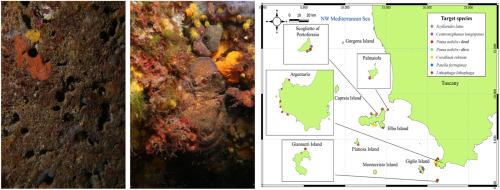Citizen science: a key tool for addressing knowledge gaps in the conservation status of protected species in Tuscan Mediterranean Sea
IF 2.6
3区 地球科学
Q1 MARINE & FRESHWATER BIOLOGY
引用次数: 0
Abstract
The Mediterranean Sea is a biodiversity hotspot. The heterogeneity of habitats and the great richness of species are a resource to be protected. According to the Habitats Directive (92/43/EEC), Natura 2000 network is the main instrument of the European Union for biodiversity conservation. The aim of this contribution is to apply a citizen science approach as an innovative and effective method to address knowledge gaps regarding the conservation status of six marine species in Tuscan waters (NW Mediterranean) and listed in the Habitat Directive: Centrosthephanus longispinus, Corallium rubrum, Lithophaga lithophaga, Pinna nobilis, Patella ferruginea, Scyllarides latus. This method identifies these rarest or cryptic invertebrate through well-trained citizens (divers, kayakers) whose observations (photos, videos or detailed description made by experienced observers) were validated by experts for updating Standard Forms, the identity cards of Natura (2000) sites. Results confirmed the “Endangered” C. rubrum distribution in historical sites and the presence in Tuscan archipelago of four alive specimens of “Critically Endangered” P. nobilis. For the first time the presence of P. ferruginea was recorded in a new site in Elba Island and information concerning species whose ecology is still little known as C. longispinus, L. lithophaga and S. latus, are collected. The involvement of direct observers of the marine environment makes monitoring effective and continuously updated. Information obtained may allow to propose the extension and/or the establishment of Natura (2000) sites for the safeguard of ecosystems. This innovative method can lay the basis for a temporal distribution status assessment of this species.

公民科学:解决托斯卡纳地中海受保护物种保护状况方面知识差距的关键工具
地中海是生物多样性的热点地区。生境的异质性和物种的巨大丰富性是需要保护的资源。根据生境指令(92/43/EEC), Natura 2000网络是欧盟生物多样性保护的主要工具。这一贡献的目的是应用公民科学方法作为一种创新和有效的方法来解决关于托斯卡纳水域(地中海西北部)六种海洋物种保护状况的知识空白,这些物种被列入栖息地指令:centrothephanus longispinus, Corallium rubrum, Lithophaga Lithophaga, Pinna nobilis, Patella ferruginea, Scyllarides latus。这种方法通过训练有素的公民(潜水员、皮划艇运动员)来识别这些最稀有或神秘的无脊椎动物,这些公民的观察(由经验丰富的观察者拍摄的照片、视频或详细描述)由专家验证,以更新标准表格,即Natura(2000)网站的身份证。结果证实了“濒危”红杉在历史遗址的分布,以及“极度濒危”红杉在托斯卡纳群岛的4个活体标本。首次在厄尔巴岛新址记录到P. ferruginea的存在,并收集到C. longispinus、L. lithophaga和S. latus等生态鲜为人知的物种的资料。海洋环境直接观察员的参与使监测有效并不断更新。获得的信息可能允许提议扩展和/或建立自然保护区(2000),以保护生态系统。该方法可为该物种的时空分布状况评估奠定基础。
本文章由计算机程序翻译,如有差异,请以英文原文为准。
求助全文
约1分钟内获得全文
求助全文
来源期刊
CiteScore
5.60
自引率
7.10%
发文量
374
审稿时长
9 months
期刊介绍:
Estuarine, Coastal and Shelf Science is an international multidisciplinary journal devoted to the analysis of saline water phenomena ranging from the outer edge of the continental shelf to the upper limits of the tidal zone. The journal provides a unique forum, unifying the multidisciplinary approaches to the study of the oceanography of estuaries, coastal zones, and continental shelf seas. It features original research papers, review papers and short communications treating such disciplines as zoology, botany, geology, sedimentology, physical oceanography.

 求助内容:
求助内容: 应助结果提醒方式:
应助结果提醒方式:


